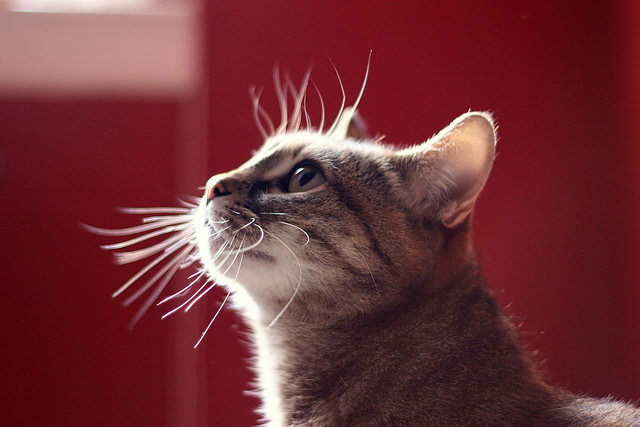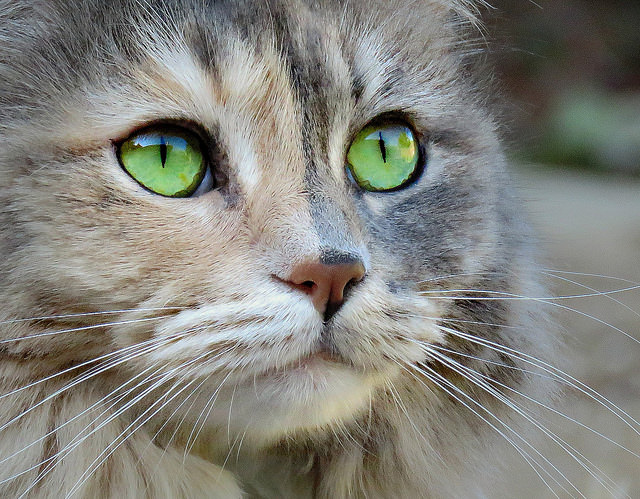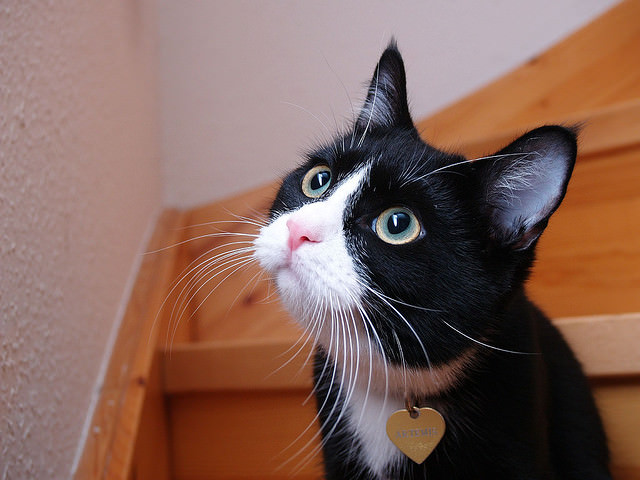When it comes to your cat’s appearance, it can be easy to shrug off the importance of features like whiskers. After all, we rarely see them in action. Cats are very intentional creatures though and nearly everything about them has a purpose– yes, even their whiskers.

Image Source: Melissa Wiese via Flickr.com
How whiskers help your cat
Your cat uses her whiskers in the same way you use your fingers to help move around in the dark. She’s able to do this because her whiskers are rooted deeper than the rest of the hair on her body and each one has a set of nerve endings that send signals to her brain and nervous system.
The signals that are sent to her brain and nervous system from the whiskers help your cat have a hyper-awareness about her surroundings and help her sense even the slightest shift in her environment. Many people know that whiskers help cats determine whether or not they can fit into a small space and help them visually measure distance. This is because, on most cats, the length of their whiskers corresponds to the width of their bodies. What many people don’t know is that your cat’s whiskers are also very sensitive to vibrations in the air currents. This sensitivity helps them sense the presence of prey before they even see the mouse. No wonder they are such great hunters!
The amount of awareness given to your cat by her whiskers allows her to safely and securely navigate her environment. In fact, her whiskers play a large role in how she’s able to leap gracefully onto a thin ledge and anticipate invisible dangers.

Image Source: dano272 via Flickr.com
Your cat has whiskers in several locations and each serves a purpose
We’re all aware that our cats have whiskers on their cheeks and upper lips, but cats have whiskers in several other locations too– and each serves a unique purpose.
- Cheeks – The whiskers in your cat’s cheeks help her determine whether or not she’ll be able to squeeze through a tight space. These whiskers also pick up slight shifts in air currents, which keep her alert to changes (and potential dangers) in her environment.
- Eyes – Your cat also has whiskers above her eyes, which sort of look like eyebrows. These ones provide protection to her eyes by triggering her to blink when they are touched. In the wild, these whiskers would help keep her safe if she was hunting in tall grass or bushy areas where her eyes may be in danger of being poked by stray branches or debris.
- Legs – The whiskers on her legs (located on both the front and the back) are nearly impossible to spot. Cats have a hard time seeing things that are close to their faces, so the whiskers on your cat’s legs help her get more information about what’s around her. These whiskers come in handy when your cat is hunting since they can help her determine whether her prey is still alive by sensing the slightest movements.

Image Source: Trish Hamme via Flickr.com
No grooming necessary
Your cat’s whiskers don’t require any grooming from you– they will shed and grow back on their own. Keep an eye out for whiskers if you’re walking around your home with bare feet, since stepping on them can feel like stepping on a sewing needle. Ouch!
Attempting to groom or cut your cat’s whiskers can actually cause harm to your cat. Since her whiskers play such a large role in helping her assess her environment, the loss of her whiskers (even a trim) can cause her to become very distressed and disoriented.

Image Source: Tommy Hemmert Olesen via Flickr.com
Sometimes cats break all the rules
We’re talking about cats here, so of course they like to keep us on our toes and break all of the rules. If you want to see a severely cute breed of cat whose whiskers are curly instead of straight, check out this article about the Selkirk Rex. Wow!
